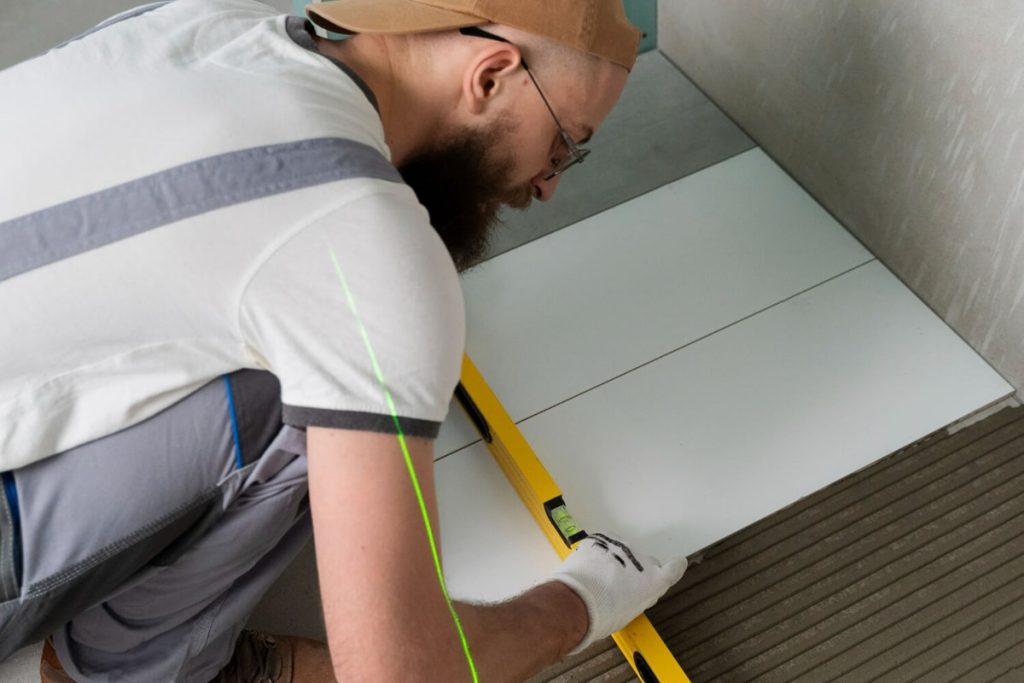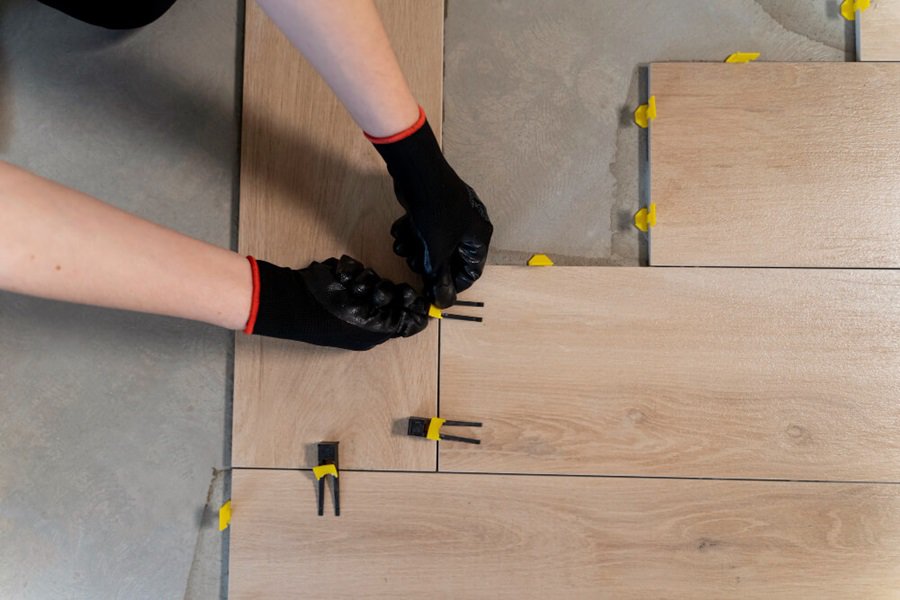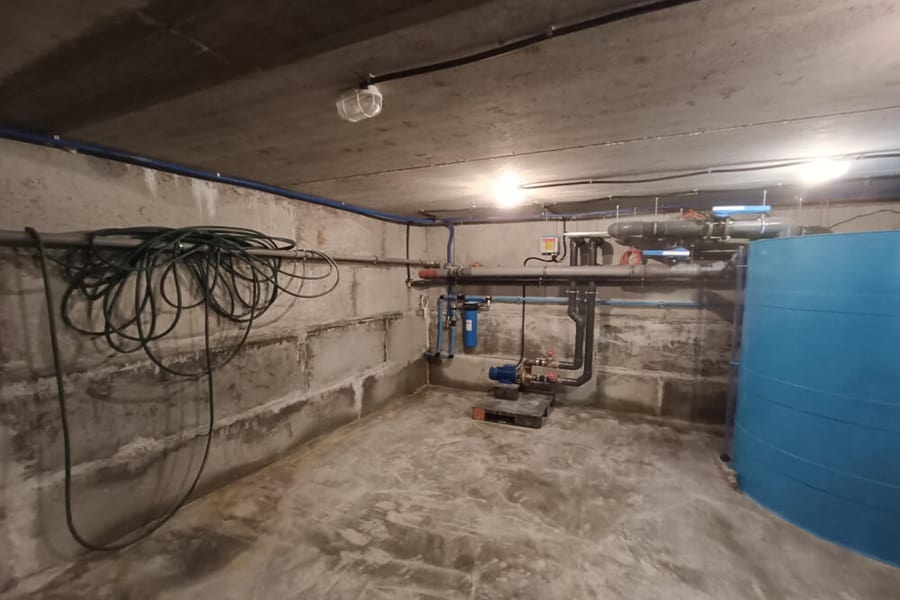
Add underfloor heating in basements alongside the right flooring and insulation for a transformative environment.
Basements are often one of the more colder locations of a house. Therefore, if you are looking to renovate your basement with these ideas and designs, it’s imperative that you can keep this area of your home warm and cosy. Discover how underfloor heating can revolutionise the lower levels of your home, offering both comfort and efficiency. In this article, we will explore the best basement flooring options and methods to insulate your basement floor, ensuring a cosy, energy-efficient area for your home.
Key points:
- Learn why you should add underfloor heating in basements.
- Find out why the right underfloor heating and basement flooring types will affect its performance.
Key Considerations for Basement Heating
When choosing heating for your basement, here are some key heating types to consider:
- Radiant Heating Systems: Ideal for the unique environment of a basement, radiant heating systems, including underfloor heating, especially single zone underfloor heating, deliver consistent and controlled warmth across the entire area. This method is particularly suited for basements with limited natural light, providing a gentle and even heat distribution that transforms these spaces into comfortable living or working areas.
- Ductless Heat Pumps: For those seeking a versatile heating and cooling solution, ductless heat pumps are an excellent choice. They cater specifically to the localised climate needs of a basement, ensuring a comfortable environment year-round, without the extensive ductwork of traditional systems. We have a useful guide here on ground source heat pumps with underfloor heating and how these two systems can be integrated.
- Alternative Heating Methods: While wood-burning stoves and fireplaces add a rustic charm and warmth to a basement, they come with considerations of health, safety, and environmental impact. It’s essential to balance these factors when choosing the right heating solution for your space.
Advantages of Underfloor Heating in Basements
Here are the benefits on why you should add underfloor heating to your basement flooring.
- Space and Comfort: Installing underfloor heating can significantly further the functionality and comfort of your basement. It turns an often neglected area into a warm, inviting space, ideal for family activities or a personal retreat.
- Energy and Design Flexibility: Underfloor heating operates at lower temperatures compared to conventional systems, leading to reduced energy consumption and lower heating costs. Additionally, it offers design freedom, allowing you to utilise every inch of your basement without the limitations of radiators or visible piping. Contact us for further information.
- Improved Air Quality: Basements can be prone to dampness and poor air circulation. Radiant floor heating helps mitigate these issues by reducing moisture and dust levels, creating a healthier environment.
Precautions for Basement Underfloor Heating Installation
Whilst adding underfloor heating to your basement is a great idea, there are still some precautions that you should be aware of:
- Waterproofing and Insulation: Before installation, ensure the basement is waterproof to prevent damage to the heating system and flooring. Proper insulation of the basement floor is crucial to prevent heat loss.
- Construction Height: In basements, where ceiling height may be limited, selecting underfloor heating plates designed for low-profile installation can be beneficial. These plates allow for a streamlined setup without sacrificing the performance of the heating system.
Here is everything you need to know about waterproofing your basement.
How To Install Basement Underfloor Heating Plates
For DIY experts, follow our guidance on how to install underfloor heating plates:
- Floor Preparation: Begin your basement renovation by thoroughly cleaning and levelling the basement flooring. Address any irregularities and assess the need for waterproofing to protect against moisture damage. This step is crucial for ensuring a solid foundation for the underfloor heating system.
- Placement of Heating Plates: Install the underfloor heating plates across the basement floor, maintaining even spacing as per the manufacturer’s guidelines. These plates form the base for the heating tubes and must be laid out methodically to cover the entire area effectively.
- Heating Tubes Installation: Carefully lay the underfloor heating tubes within the grooves of the plates, avoiding any sharp bends or twists. Ensure a seamless connection with plumbing and transition fittings to the heating system to facilitate efficient heat distribution throughout the basement.
- Finalising the Installation: After setting the heating tubes, complete the process by covering them with your chosen basement flooring material, such as tile or wood. Adhere to the flooring installation instructions to ensure compatibility with the underfloor heating.
- System Testing: Before enjoying the newly heated space, test the underfloor heating system to confirm its operation and make necessary adjustments for optimal performance.
Choosing the Right Floor Heating System
There are some variables to consider in terms of basement in different types of homes. See more below.
For New Constructions:
In new basements, a water underfloor heating system is often best, allowing for integration into the building’s design. This system is ideal for maintaining consistent temperature control and efficiency in new constructions, and should be done when the structure is still being built for easier integration.
For Retrofitting:
For those upgrading an existing basement, electric underfloor heating is a practical choice. They are compatible with various subfloor materials and are designed for swift, straightforward installation, making them perfect for transforming your basement into a comfortable living area.
6 Basement Flooring Options

Choosing the best flooring for underfloor heating in basements is pivotal for the overall comfort and functionality of your underfloor heating system. Here we discuss the six best flooring options, considering factors like durability, maintenance, and insulation capabilities.
1. Sheet Vinyl
Sheet vinyl, known for its water resistance and cost-effectiveness, is an excellent choice for basement flooring. It’s available in various thicknesses and designs, offering both aesthetic flexibility and practicality. Applying it directly over concrete with adhesive simplifies installation, making it ideal for quick renovations.
- Pros: Affordable, quick to install, waterproof.
- Cons: Susceptible to dents and tears, challenging to remove, not eco-friendly.
Learn more about vinyl flooring with underfloor heating here.
2. Ceramic or Porcelain Tile
Ceramic or porcelain tiles provide a durable and water-resistant flooring option. While ceramic tiles are cost-effective and widely available, porcelain tiles offer enhanced density and colour consistency, making them suitable for high-traffic basement areas.
- Pros: Water-resistant, durable, long-lasting.
- Cons: Higher installation cost, hard to clean, heavy.
3. Luxury Vinyl Plank (LVP)
LVP mimics the look of hardwood or stone and is a versatile choice for basements. Its water-resistant nature and ease of installation, whether glued down or as a floating floor, make it practical for areas prone to moisture.
- Pros: Economical, waterproof, low maintenance.
- Cons: May affect home resale value, non-biodegradable, installation challenges.
4. Engineered Wood
For a warm, natural look, engineered wood is a viable option, featuring a real wood surface layer over a stable core. It stands as a cost-effective alternative to hardwood, offering a balance between aesthetics and functionality.
- Pros: Less expensive than hardwood, visually appealing, positive resale value.
- Cons: Prone to scratches and moisture damage, installation cost.
5. Concrete
Concrete floors, known for their durability and low maintenance, can be an excellent choice for basements, especially for underfloor heating on concrete floors. Sealed or painted concrete can offer both functionality and style.
- Pros: Economical, eco-friendly, compatible with radiant heating.
- Cons: Feels cold and hard, risk of cracking.
6. Laminate
Laminate flooring provides a cost-effective, durable surface that’s easy to install and maintain. While it offers the look of hardwood, it’s crucial to consider its performance in moisture-prone environments.
- Pros: Affordable, simple installation, easy to clean.
- Cons: Vulnerable to moisture, potential chipping during installation, may impact resale value.
Alternative Heating Solutions for Basements

Beyond underfloor heating, there are several other options to consider for heating your basement effectively, each with its own set of advantages.
Mini Split Heat Pumps
Mini split systems are ideal for basements without existing ductwork, offering efficient heating and cooling. These units are energy-efficient, drawing thermal heat from outside air, and can significantly reduce utility bills. They also improve indoor air quality by avoiding ductwork that can harbour dust and mould.
Vents to Existing Air Ducts
Integrating vents into your current HVAC system is a straightforward solution for extending heat to the basement. This method utilises the existing infrastructure to provide consistent warmth, especially in larger basements.
Space Heaters
For smaller areas or as a supplementary heat source, space heaters are a practical option. They are portable and affordable but should be used with caution to avoid safety risks and excessive energy consumption.
Radiant Heat Panels
Wall and ceiling-mounted radiant heat panels offer a cost-effective and efficient heating alternative, particularly suited for smaller or segmented spaces in the basement.
Fireplaces and Stoves
Adding a fireplace or stove can create a cosy atmosphere while providing heat. These options require careful consideration of safety, efficiency, and environmental impact.
Basement Insulation: Expert Tips
To maximise the warmth in your basement, consider these insulation tips:
- Insulate thoroughly: Proper insulation of walls, floors, and ceilings is essential to retain heat and improve the energy efficiency of your basement.
- Use carpets and rugs: Add a layer of insulation to the floor, to keep the area warm and cosy.
- Optimise airflow: Ceiling fans set to rotate clockwise can push warm air back down, maintaining a comfortable temperature.
- Seal windows and doors: Prevent heat loss by sealing gaps and cracks in windows, doors, and foundation walls.
Here is why you should hire a professional when installing underfloor heating.
Choose The Right Basement Flooring and Insulation

In conclusion, selecting the right basement flooring and heating system, such as underfloor heating, can transform your basement into a warm, energy-efficient space. With options ranging from sheet vinyl to engineered wood, and alternative heating solutions like mini-split heat pumps and radiant panels, you can find the perfect fit for your needs. Proper insulation and strategic heating choices will ensure your basement is a comfortable, inviting extension of your home year-round.
FAQs
Can you put underfloor heating in a basement?
Yes, you can put underfloor heating in a basement, and it is often recommended to improve warmth and comfort in this typically cooler area.
Can you lay underfloor heating directly on concrete?
Yes, you can lay underfloor heating directly on concrete. It acts as a good thermal mass, efficiently storing and radiating the heat.
Can I install my own underfloor heating?
Yes, you can install your own underfloor heating if you have the necessary skills and tools, but it’s important to follow the manufacturer’s guidelines and possibly consult with a professional to ensure proper installation.
Do you have to dig up the floor for underfloor heating?
Digging up the floor for underfloor heating is not always necessary, especially for electric systems that can be installed over existing floors, but for water-based systems, some excavation might be needed to accommodate the piping.
Sources
Houzz, (2019) 75 Beautiful Basement Ideas and Designs. [online] Available at: https://www.houzz.co.uk/photos/basement-ideas-and-designs-phbr0-bp~t_10415 [accessed 09/04/24]
Drylok (n.d.) Everything You Need to Know About Waterproofing Basement Walls. [online] Available at: https://www.drylok.com/learn/blog/everything-you-need-to-know-about-waterproofing-basement-walls [accessed 09/04/24]
